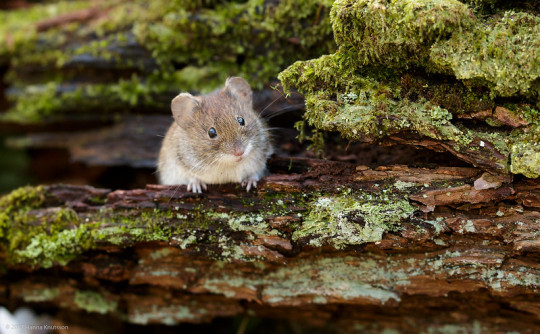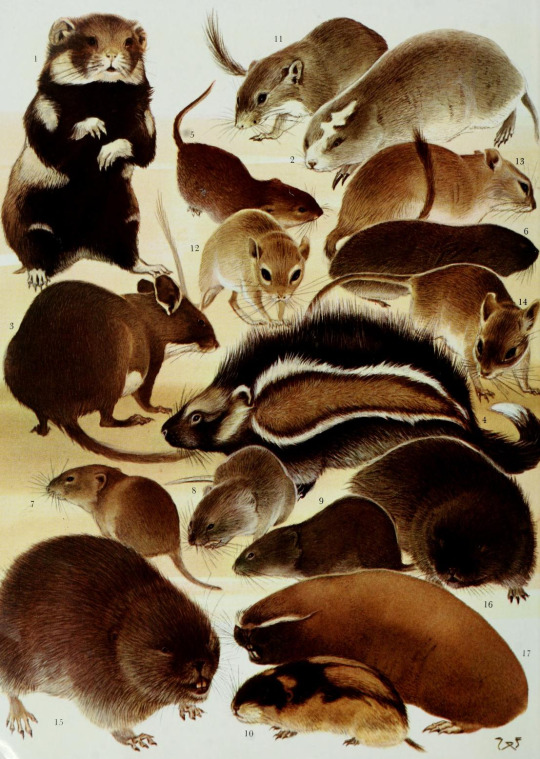#myodes
Text

A bank vole (Myodes glareolus) in Gothenberg, Sweden
by Hanna Knutsson
#bank vole#voles#rodents#myodes glareolus#myodes#Cricetidae#rodentia#mammalia#chordata#wildlife: sweden#wildlife: europe
2K notes
·
View notes
Text
khmer couple sex
Round titted virgin Maria Stupor impales herself on a dick
Sweetie welcomes horny neighbour to drill her in hardcore
Boquete gozando na cara da novinha
teen japanese got cum inside
OUR FIRST LESBIAN STRAPON FUCK
Fingering UK milf plowed by lucky old man
Aidra Fox kneel down to slide Seth hard dick inside her mouth
chica se mete los dedos y se masturba
Busty babe with hairy pussy enjoys hardcore sex
#Myodes#sweet-breathing#phthisical#pendant-winding#gonoph#unfrivolous#depraver#despisement#Scripps#she-baker#pig-haired#aurified#pipelike#homocyclic#cerebrosensorial#shouritsu#Auzout#hawaiians#silicone#colessor
0 notes
Text



SEPTIC EGOS / ALTRVERSE NATION HOW WE DOING
#cotton rambles#FRONTHS AT THE MOUF /POS /POS#POINTS AT THESE TWO#YOUR HONOR LOOKIT THEM THRIVING OH MYOD#ITS BEEN YEARSSSSSSSSSSS SINCE 2016#oh hell yeAH IM DRAWING THEM AGAIN OH MY GOD LOOKIT EHM#SOBBING RJDDBDJDBSKS#I AM ON HIATUS DUE TO MIDTERMS EXAMS SO THE REACTIONS DELAYED BUT AAAAAAA#MIDTERMS BOUTTA CATCH THESE HANDS I WANNA DRAW THEMA GAIN-#abdoawdaohiwdhoiahioad#septic egos#jacksepticeye#altrverse
31 notes
·
View notes
Text

youtube
11 notes
·
View notes
Photo

28 notes
·
View notes
Text

It’s Wednesday, so hang in there like the bank vole (Myodes glareolus)! Though it resembles a mouse, this species is distinguished by a shorter tail and stockier build. Mostly herbivorous, it’s a proficient climber that uses acrobatic skill to reach seeds and fruits. Its diet also includes moss, fungi, and nuts. Weighing up to 1.27 oz (36 g), this diminutive critter can be found across most of Europe as well as parts of Asia.
Photo: Sue Cro, CC BY-NC 2.0, flickr
#science#nature#natural history#animals#mouse#vole#bank vole#cute animals#wednesday#did you know#fact of the day#fun animal#animal kingdom#wildlife
1K notes
·
View notes
Text

Grzimek's Animal Life Encyclopedia, vol. 11, Mammals II. 1972.
1.) European hamster (Cricetus cricetus)
2.) False zokor (Myospalax aspalax)
3.) Western nesomys (Nesomys lambertoni)
4.) Maned rat (Lophiomys imhausi)
5.) Bank vole (Myodes glareolus)
6.) Southern mole vole (Ellobius fuscocapillus)
7.) Common vole (Microtus arvalis)
8.) European snow vole or snow vole (Chionomys nivalis)
9.) Eastern meadow vole (Microtus pennsylvanicus)
10.) Norway lemming (Lemmus lemmus)
11.) Tristram's jird (Meriones tristrami)
12.) North African gerbil (Dipodillus campestris)
13.) Great gerbil (Rhombomys opimus)
14.) East African Gerbil (Gerbilliscus vicinus)
15.) Bamboo rat (Rhizomys sp.)
16.) Northeast African mole-rat (Tachyoryctes splendens)
17.) Lesser blind mole-rat (Nannospalax leucodon)
283 notes
·
View notes
Text
just ate the spiceiest ramen of my life i got afew bites in and immediately couldnt finish eating it oh myod mistakes have been. made
17 notes
·
View notes
Text
In 2005 Paweł Koteja with Edyta Sadowska and colleagues from the Jagiellonian University (Poland) started a multidirectional selection on a non-laboratory rodent, the bank vole Myodes (= Clethrionomys) glareolus.[43] The voles are selected for three distinct traits, which played important roles in the adaptive radiation of terrestrial vertebrates: high maximum rate of aerobic metabolism, predatory propensity, and herbivorous capability. Aerobic lines are selected for the maximum rate of oxygen consumption achieved during swimming at 38°C; Predatory lines – for a short time to catch live crickets; Herbivorous lines – for capability to maintain body mass when fed a low-quality diet “diluted” with dried, powdered grass. Four replicate lines are maintained for each of the three selection directions and another four as unselected Controls.
After approximately 20 generations of selective breeding, voles from the Aerobic lines evolved a 60% higher swim-induced metabolic rate than voles from the unselected Control lines. Although the selection protocol does not impose a thermoregulatory burden, both the basal metabolic rate and thermogenic capacity increased in the Aerobic lines.[44][45] Thus, the results have provided some support for the “aerobic capacity model” for the evolution of endothermy in mammals.
More than 85% of the Predatory voles capture the crickets, compared to only about 15% of unselected Control voles, and they catch the crickets faster. The increased predatory behavior is associated with a more proactive coping style (“personality”).[46]
During the test with low-quality diet, the Herbivorous voles lose approximately 2 grams less mass (approximately 10% of the original body mass) than the Control ones. The Herbivorous voles have an altered composition of the bacterial microbiome in their caecum.[47] Thus, the selection has resulted in evolution of the entire holobiome, and the experiment may offer a laboratory model of hologenome evolution.
they are breeding supervoles in the labs. we need more of this. we need super wolves to eat the extra deer. and those pigs that are causing problems. make them hate the taste of human babies
34 notes
·
View notes
Text
[CM] Mammals - Prey
Third and final mammal post (for now), most of the animals here are taken by ClayClan as prey. They’re the size of or smaller than cats and generally safe to hunt, though there are exceptions. Below are translations for red-backed voles, bog lemmings, eastern chipmunks, and short-tailed shrews, plus several animals with the same name as base Clanmew.
Bats (general) - Fip*
There’s several bat species in ClayClan, buuuut I’m yet to look into them, so for now I’m just listing the general term. Bats aren’t hunted (they’re too fast and have too little meat) but are instead enjoyed as nimble predators in their own right. Someday I’ll make a bat expansion with more words!
Snowshoe hare (Lepus americanus) - Yywaya*
Cat-sized or slightly larger. The largest mammal that’s regularly hunted; hares make for a challenging but rewarding meal. They change color depending on the season, bearing a mottled brown coat in summer and a pure white one in winter. The god Chikik is believed to resemble a snowshoe hare!
Long-tailed weasel (Mustela frenata) - Morfaf*
Long snake-like body, very similar to an ermine. Both a hunter and the hunted - weasels compete with cats for small mammalian prey like mice and chipmunks, but are also killed to be eaten by the Clan.
Gray squirrel (Sciurus carolinensis) - Chakchak*
About a third of the size of a cat. These animals are found all over the forest, especially during fall, when they bury nuts for later retrieval. Hunted year-round as a hearty meal. Typically gray-and-white but sometimes all black!
Eastern chipmunk (Tamias striatus) - Twipip
A small, relatively non-challenging prey animal. Easy to find foraging on the ground in open woodland.
White-footed mouse (Peromyscus leucopus) - Nai*
White-footed mice are hunted often, but warriors must be careful to inspect the prey before transporting it for one important reason - white-footed mice are a favored host of larval deer ticks! Nobody wants to be the one responsible for bringing those back to camp...
Red-backed vole (Myodes rutilus) - Kakak
Common and easy to hunt, but not preferred due to their lack of meat. More valuable in winter when other prey becomes scarce.
Bog lemming (Synaptomys cooperi) - Wee
Rare! Sometimes hunted when found, but generally considered not worth it due to their small size.
Star-nosed mole (Condylura cristata) - Bosgo*
Found in shallow tunnels under wet soil. Hunted on occasion. Considered strange for their branching nose tentacles.
Short-tailed shrew (Blarina brevicauda) - Mwsswo (mwssaf*, owo*)
Hunted semi-frequently, but warriors must be careful to avoid getting bit, as short-tailed shrew saliva contains a toxin that causes unusually painful bites!
7 notes
·
View notes
Text
ohm god o h my god oh myod
2 notes
·
View notes
Text
hi welcome to my blog :)
TERFS, SWERFS, ZIONISTS, AND OTHER PIECES OF SHIT FUCK OFF!!!!!!!!!
anyway. im kay (they/them), 22, white, from the midwestern usa
enjoy your stay! readmore for more about me and the blog/sideblogs :)
interests include:
music and composing (especially classical music)
linguistics
various open world rpgs (elder scrolls + fallout especially sorry)
writing (ask me about meia or myod!!)
astronomy
tags (my tagging consistency sucks but im trying):
#friend art - it's my friends' art!! go look at it!!
#ref - things im saving for my own reference
#mdni/#minors dni - exactly what it says on the tin, minors should blacklist these tags (i dont think i have any minors following me and id prefer my followers to be 18+ but this isnt an explicit blog or anything)
#asks - sporadically used when i reply to asks i get
others that i will remember and add as i go
feel free to request anything to be tagged for any reason!!!
sideblogs:
@identifying-fish-in-posts - i identify fish in posts (sometimes correctly)
@mediocre-ma-non-troppo - classical music sideblog that i have not used in ages
1 note
·
View note
Text
IJMS, Vol. 25, Pages 3440: Systematic Identification of Long Noncoding #RNAs during Three Key Organogenesis Stages in Zebrafish
Thousands of l#ncRNAs have been found in zebrafish embryogenesis and adult tissues, but their identification and organogenesis-related functions have not yet been elucidated. In this study, high-throughput sequencing was performed at three different organogenesis stages of zebrafish embryos that are important for zebrafish muscle development. The three stages were 10 hpf (hours post fertilization) (T1), 24 hpf (T2), and 36 hpf (T3). L#ncRNA gas5, associated with muscle development, was screened out as the next research target by high-throughput sequencing and qPCR validation. The spatiotemporal expression of l#ncRNA gas5 in zebrafish embryonic muscle development was studied through qPCR and in situ hybridization, and functional analysis was conducted using CRISPR/Cas9 (clustered regularly interspaced short palindromic repeats/Cas9, CRISPR/Cas9). The results were as follows: (1) A total of 1486 differentially expressed l#ncRNAs were identified between T2 and T1, among which 843 l#ncRNAs were upregulated and 643 were downregulated. The comparison with T3 and T2 resulted in 844 differentially expressed l#ncRNAs, among which 482 l#ncRNAs were upregulated and 362 l#ncRNAs were downregulated. A total of 2137 differentially expressed l#ncRNAs were found between T3 and T1, among which 1148 l#ncRNAs were upregulated and 989 l#ncRNAs were downregulated, including l#ncRNA gas5, which was selected as the target gene. (2) The results of spatiotemporal expression analysis showed that l#ncRNA gas5 was expressed in almost all detected embryos of different developmental stages (0, 2, 6, 10, 16, 24, 36, 48, 72, 96 hpf) and detected tissues of adult zebrafish. (3) After l#ncRNA gas5 knockout using CRISPR/Cas9 technology, the expression levels of detected genes related to muscle development and adjacent to l#ncRNA gas5 were more highly affected in the knockout group compared with the control group, suggesting that l#ncRNA gas5 may play a role in embryonic muscle development in zebrafish. (4) The results of the expression of the skeletal myogenesis marker myod showed that the expression of myod in myotomes was abnormal, suggesting that skeletal myogenesis was affected after l#ncRNA gas5 knockout. The results of this study provide an experimental basis for further studies on the role of l#ncRNA gas5 in the embryonic skeletal muscle development of zebrafish. https://www.mdpi.com/1422-0067/25/6/3440?utm_source=dlvr.it&utm_medium=tumblr
0 notes
Text
Fwd: Postdoc: UExeter.EvolutionaryEcology
Begin forwarded message:
> From: [email protected]
> Subject: Postdoc: UExeter.EvolutionaryEcology
> Date: 20 October 2023 at 07:19:13 BST
> To: [email protected]
>
>
> 3-year Postdoc position in Evolutionary Ecology, University of Exeter, UK
>
> We are seeking a Postdoctoral Research Fellow with experience in
> evolutionary, behavioural or molecular ecology to participate in a
> NERC-funded research project to investigate processes that contribute
> to the maintenance of genetic variation in disease susceptibility in
> natural populations. Using a wild rodent (Myodes glareolus) as a model,
> the project investigates the importance of pathogen-specificity and
> immunopathology in mediating costs of resistance, and tests if the fitness
> consequences of balanced genetic polymorphisms are context-dependent. The
> project combines monitoring and sampling of wild populations, with
> experiments in outdoor enclosures and in captivity. It integrates a
> range of -omics, ecophysiological, quantitative genetic and statistical
> approaches and tools. The postdoc will be responsible for the planning
> of the project, data collection and data analysis, with the support
> of associated researchers and technicians. Specific activities will
> include field data collection, bioinformatics analyses, statistical
> analyses, assessing, interpreting and evaluating outcomes of research,
> preparing manuscripts for publication, science communication and public
> outreach. While the postholder is expected to already have some of the
> skills required for the work, they will be able to obtain training in
> areas where they lack experience. The project team includes Dr Barbara
> Tschirren (PI), Dr Xav Harrison, Prof Erik Postma (University of Exeter,
> UK), Prof Lars Råberg (Lund University, Sweden), Prof Tapio Mappes and
> Prof Phill Watts (University of Jyväskylä, Finland). Extended visits to
> Scandinavian field sites are planned for data collection and engagement
> with international collaborators.
>
> The successful applicant possesses a relevant PhD (or nearing
> completion) or equivalent qualification/experience in evolutionary,
> behavioural or molecular ecology or a related field. They are able
> to work collaboratively, have excellent organisational ability, are
> willing to supervise the work of others and act as team leader, and have
> excellent quantitative skills and fieldwork experience. The 3-year post
> is available starting by 1st May 2024 in the in the Centre for Ecology
> and Conservation at the University of Exeter’s Cornwall campus, United
> Kingdom (https://ift.tt/HU58xdy), which provides an
> environment that is outstanding on a world-scale for conducting research
> in ecology and evolution (11th ranked ecology department globally, 2021
> Shanghai University Rankings) with exceptional strengths in evolutionary
> biology, behavioural ecology and disease ecology. The successful
> applicant will have the opportunity to develop and enhance the skills
> required for a successful research career. They will be encouraged to
> take advantage of the many training courses available at Exeter in areas
> such as research skills, project management and leadership. The starting
> salary will be from £41,732, depending on qualifications and experience.
>
> The closing date for completed applications
> is 20th November 2023. Applications should be submitted via
> https://ift.tt/q0TKFar
> Please ensure you read the full person specification for the role
> (attachment JD89846.pdf on the left side of the job ad page).
>
> For further information please contact Dr Barbara Tschirren by e-mail
> ([email protected]).
>
>
> "Tschirren, Barbara"
0 notes
Text
Unveiling the Secrets of Transcriptional Regulation: A Dive into the World of Gene Expression
Transcriptional regulation, a fundamental process in molecular biology, plays a pivotal role in determining which genes are expressed and at what levels. It is the intricate conductor orchestrating the symphony of life within our cells. By understanding the mechanisms behind transcriptional regulation, scientists have unraveled numerous examples of how genes are controlled and expressed in specific cells or under certain conditions. In this article, we embark on a captivating journey into the realm of transcriptional regulation, exploring a fascinating example that showcases the complex interplay between genes and their regulatory elements.
The Art of Transcriptional Regulation:
Before diving into a specific example, let's take a moment to understand the art of transcriptional regulation. At the heart of this process lies a protein called a transcription factor, which binds to specific DNA sequences near a gene's promoter region. By binding to these regulatory sequences, transcription factors can either activate or repress gene expression, acting as the molecular switches that turn genes on or off. Transcription factors can be influenced by many factors, including cellular signals, environmental cues, and developmental stages, resulting in the precise control of gene expression patterns.
The Power of Master Regulators: The Example of MyoD:
A remarkable example of transcriptional regulation is found in muscle development. The master regulator known as MyoD holds the key to forming skeletal muscle. MyoD is a transcription factor that controls the activation of genes involved in muscle cell differentiation. MyoD binds to specific DNA sequences in muscle cells during embryonic development and triggers a cascade of events that transform undifferentiated cells into muscle cells. Through its intricate network of interactions with other regulatory proteins, MyoD coordinates the expression of a multitude of genes required for muscle formation.
Unraveling the MyoD Circuitry:
The regulation of MyoD itself adds another layer of complexity to the process. For instance, during early development, the expression of MyoD is tightly controlled by various factors, including other transcription factors and signaling molecules. In response to external signals, these factors activate or repress MyoD expression, ensuring muscle cell differentiation's proper timing and location. Once MyoD is activated, it forms a positive feedback loop that reinforces its face, leading to a robust and self-sustaining muscle differentiation program.
Dynamic Interplay and Epigenetic Modifications:
Transcriptional regulation is not limited to the direct interaction between transcription factors and DNA. Epigenetic modifications, such as DNA methylation and histone modifications, also play crucial roles. These modifications can either enhance or restrict access to the DNA, thereby modulating gene expression. In the case of MyoD, epigenetic changes contribute to establishing a stable muscle cell identity by maintaining the active state of muscle-specific genes and repressing alternative cell fate choices.
Conclusion:
The example of MyoD highlights the intricate dance of transcriptional regulation, illustrating how a single transcription factor can control a multitude of genes and shape the destiny of cells. Understanding these regulatory mechanisms enhances our knowledge of fundamental biology and holds great potential for future therapeutic interventions in various diseases.
In conclusion, transcriptional regulation is a powerful mechanism for controlling gene expression in cells. The example of MyoD demonstrates how a master regulator orchestrates the complex process of muscle development. With ongoing research, we continue to unveil the intricacies of transcriptional regulation, unlocking the mysteries that govern the expression of genes and offering insights into the intricate dance of life within our cells.
1 note
·
View note